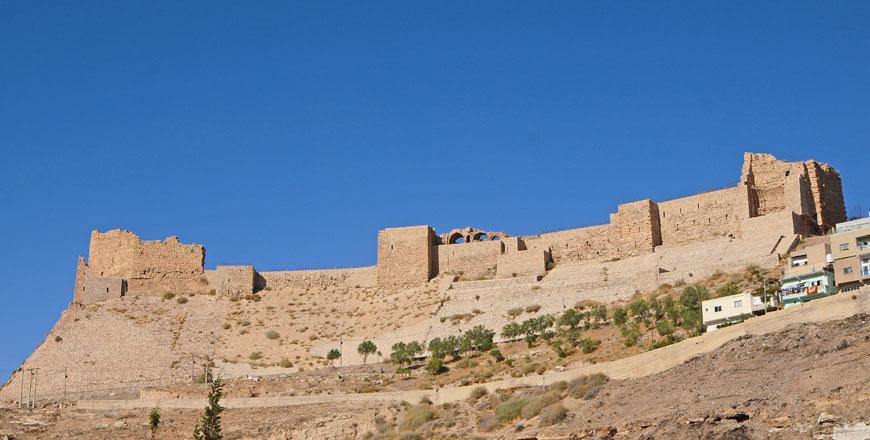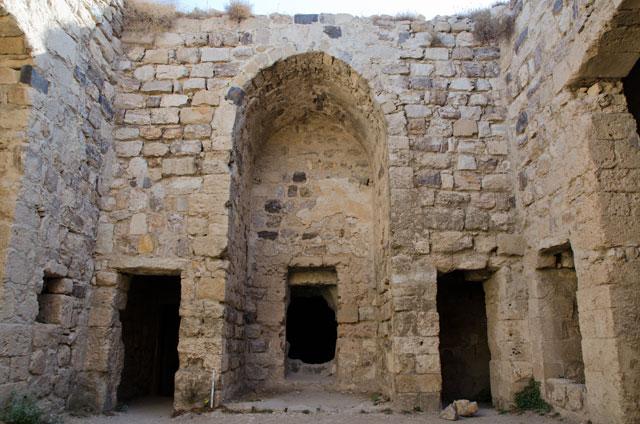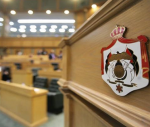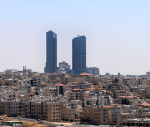You are here
Karak castle: A historical hub explored by scholars, archaeologists
By Saeb Rawashdeh - Dec 11,2023 - Last updated at Dec 12,2023
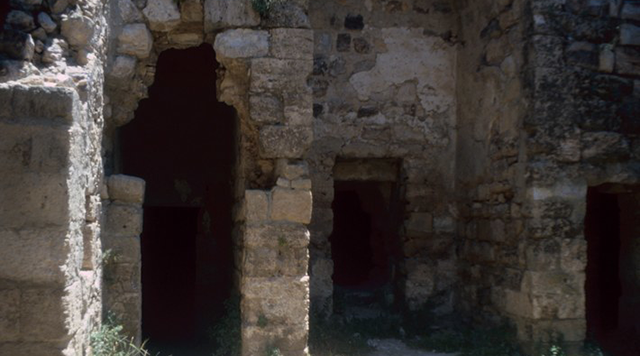
Interior of the upper town within the Karak Castle (Photo courtesy of ACOR)
AMMAN — The Karak Castle has a prominent role in history of crusades and post-crusade Mamluk-Ottoman periods. The fortress is part of the Middle Islamic (1100-1516) and Late Islamic (1516-1918) periods and therefore attracts attention of historians, archaeologists and architects as a place where different socio-economic and political trends took place.
Karak had a strategic value between the late 12th and the 14th centuries during Ayyubid and early Mamluk reign, and its status was enhanced through royal patronage. Its role became more local during the late Mamluk and early Ottoman time (15th and 16thcenturires) and the town lost its previous strategic importance.
“Karak represented a provincial citadel-town with a role in regional administration. From the 17th through late 19th century, Karak was a small town centre within the largely autonomous frontier region of the southern highlands — a territory ruled by tribal coalitions; while from the late 19th century through the early 20th century, Karak was reintegrated within the imperial Ottoman domain as an important garrison town for regional administration,” noted Robin Brown, an independent scholar specialised in the Middle and Late Islamic archaeology.
When Francs established a fortress in mid-12th century on the hilltop, the castle was surrounded by a settlement which represents a nucleus of the modern town.
“The Frankish fortress provided the structural base for the subsequent mediaeval Muslim castle of the late 12ththrough the 15thcentury. Over the course of the Ayyubid and early Mamluk periods, infrastructure continued to evolve as reconstructions were undertaken and major new features were added to the growing citadel, as well as within the prospering town,” Brown underlined.
The fortress at Karak consists of an upper castle, which retains some Crusader constructions from between 1142 and 1188, and it includes: outer defences, vaulted galleries, bakery, chapel and sacristy, and an extensive lower bailey attached beneath its western lank. The lower bailey is a post-Frankish construction, most likely of the Ayyubid period, Brown noted, adding that it was supported by a defensive wall.
Also, an open terrace was used for military drills and beneath theterrace, the subterranean level includes the west castle entranceway.
The castle also had vast subterranean storage space and secret passages for evacuation and supply during a siege. Some of these secret passages have its end a few hundred metres beneath the castle’s walls.
Mamluk rulers improved the fortress, as Sultan az-Zahir Baybars I in 1263 started a campaign of reconstruction of the castle.
“While most of the monumental inscription on the exterior face of this tower is illegible, Baybars is clearly named, and carved representations of his emblematic panthers frame either end of the dedication. The upper castle also hosts a Middle Islamic palace,” Brown said.
The Middle Islam palace was located in the upper town, near the main citadel, and the ruling elites were situated there.
“Historical sources suggest that at least two mediaeval palaces were built at Karak to accommodate the ruling elites, both of which would have been situated within the upper castle precinct. One of these is attributed to the mid-13th century rule of the Ayyubid prince an-Nasir Da’ud, while the other appears to have been patronized by Sultan an-Nasir Muhammad in the early 14th century of the Mamluk period,” Brown highlighted.
By the late 12th century, citadel-palace constructions were very popular architectural feat throughout BiladAl Sham and the neighboring territories of Egypt, the Jazira, and southeast Anatolia, and this concept gained particular popularity and momentum in and around Ayyubid Syria, where a great number of citadels embracing royal and elite residential complexes were erected, Brown underscored.
During Ayyubid and Mamluk rule, Transjordan was also a stage for the citadel-palace building culture of the Middle Islamic period, as evident at Karak, Ajloun and Shobak.
Related Articles
Amman — Karak Castle is the most famous Crusader-Islamic military site in Jordan and appears today as a perfect summary of Crusaders’, Ayyub
AMMAN — In 1189, after the victorious siege which started in 1187 and the crusaders’ fall of Hatting, Saladin came into possession of the ca
AMMAN — Despite being one of the best-preserved crusader castles in Jordan and the Near East, Karak Castle is “certainly one of the least st


